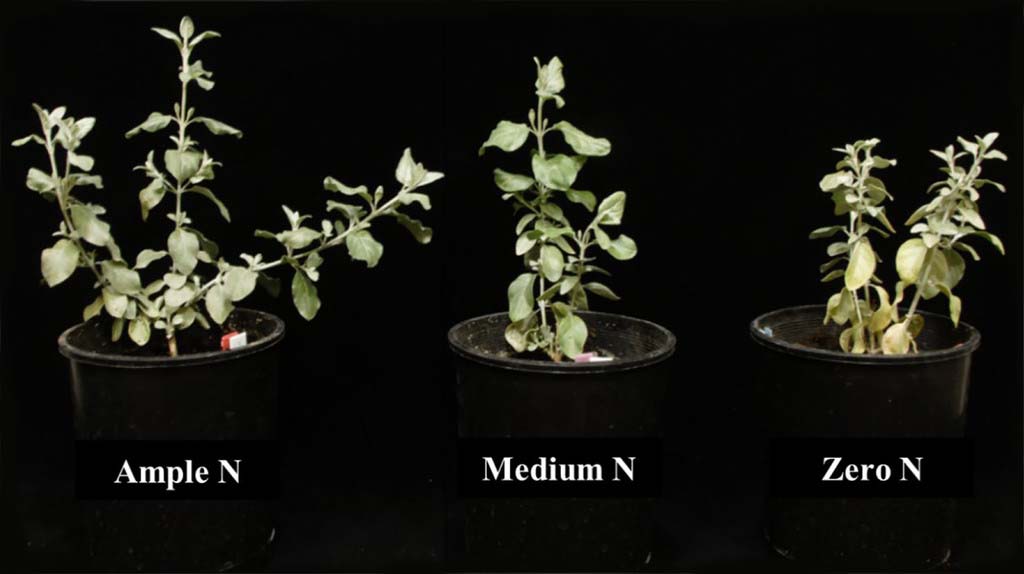Estimating Chlorophyll with NDVI
Introduction:
Tracking a plant’s chlorophyll content helps researchers and growers understand the plant’s photosynthesis capacity and stress tolerance. Leaf chlorophyll content is typically measured nondestructively with chlorophyll meters, which estimated chlorophyll using the ratio of transmitted red light and near infrared (NIR) light. Normalized difference vegetation index (NDVI) sensors have red and NIR light detectors and may be used to estimate chlorophyll content by detecting the transmitted red and NIR light through leaves. In this study, leaf chlorophyll content of ‘Torrey’ buffaloberry (Shepherdia ×utahensis) plants was measuring using chlorophyll concentration meters and NDVI sensors. Researchers also studied the affects of sunlight and electrical lights on the accuracy of NDVI measurements.Set Up:
The buffaloberry plants were grown in the Utah State University Research Greenhouse. The light intensities in the greenhouse were recorded hourly using an Apogee SP-230 heated silicon chip pyranometer mounted to a weather station. The plants were measured using an Apogee MC-100 and were separated into three groups of five. The groups were treated with 0 mm [zero nitrogen (N)], 2 mm (medium N), or 4 mm (ample N) ammonium nitrate for three weeks. The plants were moved to an open field, where Apogee S2-411 and S2-412 NDVI sensors recorded the incident red and NIR light from solar radiation and transmitted red and NIR light from leaves of buffaloberry. Chlorophyll extraction was then used to determine the actual chlorophyll concentration of the leaves.Results:
The plants receiving ample N and medium N had decreased transmitted red light (i.e., greater absorption in red light). Measurements from chlorophyll concentration meters, NDVI sensors, and chlorophyll extraction similarly showed that plants receiving medium N and ample N had greater leaf chlorophyll content than those receiving zero N. Relative leaf chlorophyll content estimated using NDVI sensors correlated positively with those from the chlorophyll meters (P < 0.0001; r2 range, 0.56–0.82). Therefore, our results indicate that NDVI measurements are sensitive to leaf chlorophyll content.Conclusion:
NDVI sensors can be used to estimate the relative chlorophyll content of nursery crops and help growers adjust fertilization to improve plant growth and nutrient status. NDVI sensors can also be used to measure chlorophyll content under sunlight or electric lamps that emit red and NIR light.
Image 2. Buffaloberry plants treated with nitrogen (N)-free Utah Monocot/Dicot solution (Bugbee, 2004) with 0 mm (zero N), 2 mm (medium N), or 4 mm (ample N) added ammonium nitrate for 3 weeks
Application Summary
 Image 1. Buffaloberry Plant
Image 1. Buffaloberry Plant
Application Summary
Summary
Researchers used Apogee Instruments' NDVI sensors, SP-230, and an MC-100 to determine if NDVI sensors can be used to estimate the relative chlorophyll content of buffaloberry plants.
Apogee Sensors Used
Organizations
- Utah State University
- Texas A&M University
Authors
- Ji-Jhong Chen
- Shuyang Zhen
- Youping Sun
Reference Article
